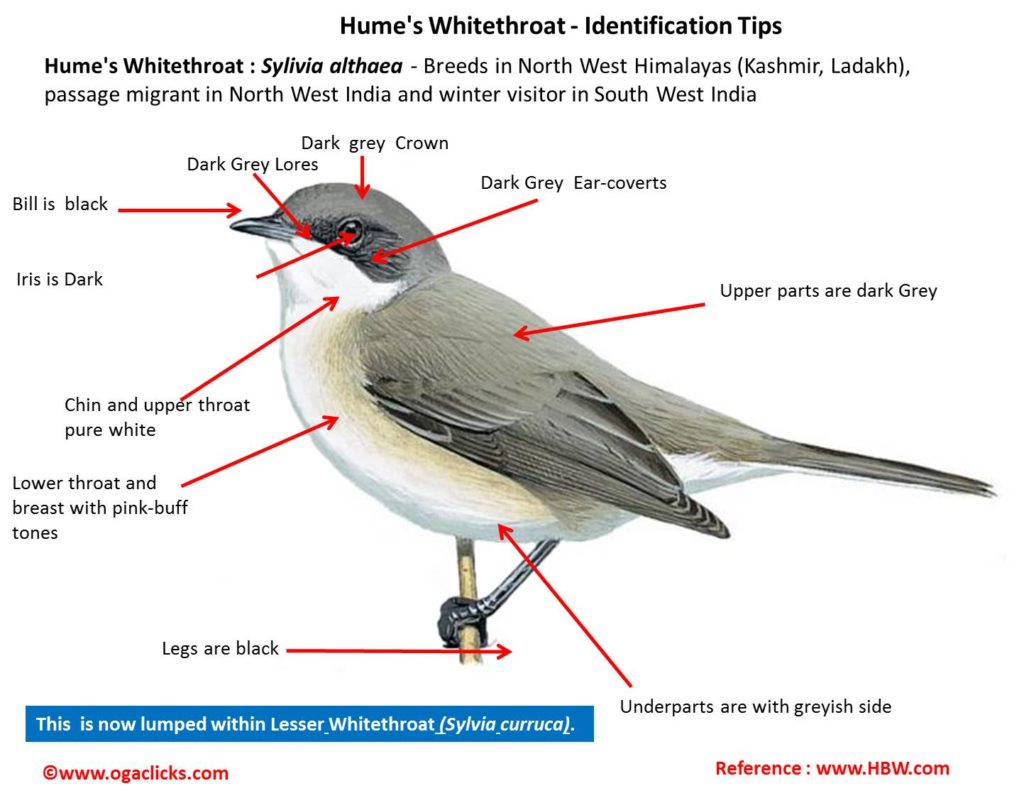Humes Whitethroat

Hume’s Whitethroat Sylvia althaea
Etymology:
- Sylvia : Latin word for “woodland sprite, little bird, warbler “
- Althaea: Althaea, wife of King Oënusof Calydon and mother to Meleager. During the
Calydonian boar hunt Meleager, in a rage, slew Althaea’s brothers, his uncles Plexippus and Toxeus.The tormented Althaea, torn between love for her son and revenge for her brothers, eventually threw the log upon which Meleager’s life depended upon the flames and he died in agony. Althaea committed suicide by driving a sword through her body
Vernacular Names :Mar: HumchaShubrakanthivatvatya
Distribution in India: Breedsin Western Himalayas, Passage migrant in North West India and winter visitor in Central and South India.
Description: Size of 12-14cm.It is amedium-sized Sylvia with dark head top and upperparts; thick-based and strong bill. Above, plumage is dark grey with slaty-bluish suffusion, forehead and crown even darker, mantle and especially scapulars slightly browner; lores and ear-coverts uniformly dark grey, very indistinct paler supercilium; obvious pale wing panel and contrasting pale edges of tertials; tail blackish, outermost rectrix with much pure white on outer web and with distinct white wedge and narrow white edge on inner web, adjacent rectrix with contrasting white on tip of inner web; chin and throat white, underparts with greyish side, paler on chest and flanks, sometimes with pink-buff tones; iris dark; bill and legs black.Both the sexes look similar.
Habitat: It is found during breeding season in broadleaf woodland and sparse juniper scrub, lower bushes and shrubs on rocky slopes, and orchards with almond in cultivated areas up to 2000–3600m.In non-breeding season present in forests and plantations.
Food Habits: It eats insects, and their eggs and larvae like, beetles, and some berries. As congeners, visits flowers of acacia, both for nectar and for insects.
Breeding Habits: They breed in April-July in India.The nest is built by both sexes. The nest is a cup made from small roots and fine stems, old leaves and soft parts of juniperand Artemisia plants, well hidden at low height, above ground, in thicket, shrub or bush, in burnt areas in absence of low vegetation sometimes in trees. The nest is more solid and better sheltered than those of congeners, presumably for protection against colder environment. They lay a clutch of 4-5 eggs. The incubation is done by both sexes, either equally or with female doing more of the work for a period of 10-11 days. The fledging period is 11-12 days. The young are fed by both parents.